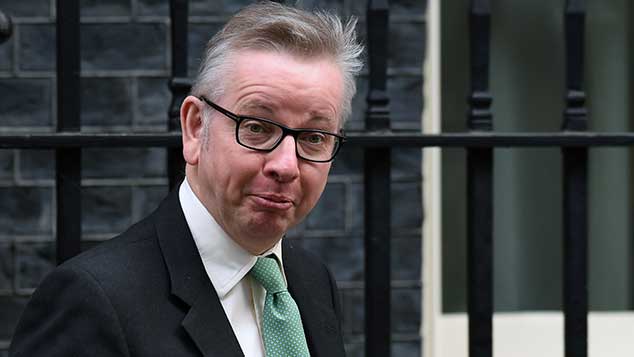
Michael Gove, one of Britain’s most divisive politicians wants to revolutionise agricultural and environmental policy after we leave the EU. But how much will really change? Simon Wilson reports.
What’s going on?
Michael Gove, the politician who polarised opinions in his stints at the Department for Education and the Ministry of Justice, is making headlines for his confident vision of a green and pleasant Brexit – a vision that has impressed even some erstwhile foes. Traditionally, the Department for Environment, Food and Rural Affairs has been seen as a political graveyard. But under Gove – amid a weak and wobbly government apparently paralysed by Brexit – it suddenly seems like the only department in Whitehall with remotely innovative policies to offer, with eye-catching announcements on everything from enhancing protection of the environment to ending subsidies for rich landowners.
How much has really changed?
In his first six months, Gove has agreed to ban damaging plastic microbeads, used in exfoliating gels and toothpastes, as well as neonicotinoids, the insecticides blamed for devastating bee populations. He has announced plans to replant woodlands and reintroduce beavers. And he has pushed through the completion and publication (in January) of the government’s 25-year plan for the environment, originally promised for early 2016. The document often reads like a well-intentioned to-do list rather than a firm set of legislative plans: the government will “explore” the idea of plastic-free aisles in supermarkets, and “consult” on deposit schemes to increase the return and re-use of plastic bottles, and so on. It promises to end all “avoidable” plastic waste by 2042 – a modest target, given the urgency of the issue – beginning with a mandatory extension of the 5p plastic-bag charge to smaller shops.
Anything else more concrete?
Yes. The plan promises that the government will plant 11 million trees, establish 500,000 hectares of new wildlife habitat, embed a principle of “environmental net gain” in planning decisions on housing and infrastructure, establish new marine conservation zones, and create a “world-leading” new environmental watchdog to hold politicians to their promises and ensure standards on clean air, water and soil. Gove has also insisted that environmental standards will not be sacrificed to secure trade deals after Brexit – offering some reassurance to those Remainers who fear a race to the bottom on regulation.
What about agricultural policy?
Even Remainers can find silver linings in leaving the Common Agricultural Policy (CAP), under which billions of pounds are spent each year subsidising farmers on the basis of how much land they have. The UK’s top beneficiaries include the Queen and the Dukes of Westminster and Northumberland. Taxpayers shell out £400,000 a year to a farm where a Saudi prince breeds racehorses. In a speech setting out post-Brexit agriculture policy at a farmers’ conference last month, Gove argued that this approach is “unjust, inefficient and drives perverse outcomes” and said the government will scrap it.
What could replace this?
Post-Brexit, the government will continue with the current £3.1bn in annual subsidies until March 2024 (two years longer than previous commitments). That’s vital, since it makes up more than half of all farmers’ incomes. After that, all such payments will depend on farmers offering wider “public goods”, such as improving public access to their land and protecting the environment. Examples of how farmers can attract public money include planting woods, creating new habitats for wildlife, increasing biodiversity, helping to improve water quality, or returning cultivated land to wild flower meadows, “or other more natural states”. Gove also promised to slash the form-filling burden for farmers, streamline the inspections regime, and develop a “national food policy” that promotes quality produce. Much of this is radical stuff that could revolutionise rural life – and it got a broadly warm welcome from both the National Farmers’ Union and the National Trust.
What do critics say?
They claim Gove and the government have identified desirable destinations without fleshing out the means of reaching them. The plans are unduly modest and don’t include specific plans for major legislation; and they have little to say about climate change. On the rural economy, the average farm size in the UK is just 160 acres; and ending basic payments under the CAP to the thousands of small farmers will be a hard blow. While Gove’s proposals offer stability during the transition, they don’t yet make clear how the government will help these businesses remain viable in the longer term.